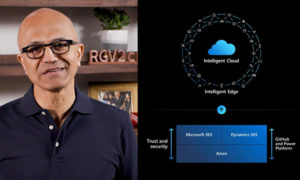As many as 80 percent of U.S. residents support frictionless payment methods and technologies, suggests a survey of 1,000 consumersViewpost published this week.
Among its other findings:
- Nearly 51 percent of survey participants were paid electronically through direct deposit;
- Eighty-three percent of respondents believed paper checks would be eliminated completely within the next 20 years, and one-third expected their demise in just five years;
- Only 11 percent thought companies would continue to use paper-based billing;
- Fifty-four percent believed companies would use automatic billing via customers’ bank accounts or credit cards;
- Fifty-two percent believed payments would be made via mobile apps; and
- Twenty-one percent saw bitcoin becoming a viable currency within the next 10 years.
“New technologies in the payment arena continue to bring more digitization and simplification, great security, and collaboration, as well as notification and faster availability of funds,” said Pat McMonagle, director of payment operations at Viewpost.
“For example, a payment through the Zelle network is much faster and more secure than a paper check,” he told CRM Buyer.
Keeping Payments Secure
The advent of faster payments has led to an increase in security and controls to reduce the probability of payment fraud, McMonagle said.
Based on the survey results, many consumers expect advanced technologies to keep them safe:
- Fifty percent of respondents believed fingerprint technology would be used for payment authentication within the next 10 years;
- Thirty-five percent saw facial recognition becoming a key payment authentication technology within the next 10 years;
- Thirty-two percent trusted facial recognition for securing electronic payments;
- Thirty-one percent considered retinal scanning as a viable payment authentication technology; and
- Eighteen percent expected to be using voice technologies to make payments by 2027.
Tomorrow’s Payment Tech
Virtual payments make business travel more efficient, compliant and fraud-resistant, according to Carlson Wagonlit Travel.
Virtual payments can replace corporate travel cards, the firm suggests in a recent white paper. They provide more security than travel cards as they can’t be lost, stolen, cloned or misused. They also can help companies manage costs.
Virtual payment transactions use a unique ID, so it’s easy to identify and track a transaction. All required reporting is captured as the virtual card is created, so reconciliation is not a problem. Virtual card settings can limit transactions to those that are compliant with company policy.
Carlson Wagonlit’s virtual payment offering connects to 26 banking partners worldwide, and the number of virtual cards it has created has gone up by 35 percent in the past 12 months.
Contactless payments can be made not only using cards, but also with wearables such as wristbands or rings, according to Gemalto, which offers a range of products for the purpose.
Influencers can sell directly to their viewers through various social media channels with Primo’s solution. Merchants and retailers using its payment infrastructure dynamically generate unique Primo QR tags that influencers can embed in photos and videos. Consumers can view and purchase items directly from their mobile devices.
That’s a good thing, as mobile payments will experience a 20.3 percent compound annual growth rate through 2021, Forrester analyst Shaurya Priya has predicted.
The Opportunity in Voice
A chatbot engine that sits on a user’s device and doesn’t have to access the cloud is the approach taken by Sensory.
“This embedded [artificial intelligence] chatbot solution runs completely on devices utilizing the applications processor within a smartphone or tablet, for example,” noted Bernie Brafman, Sensory’s VP of business development.
“It runs at the [operating system] level on the applications processor,” he told CRM Buyer. “No back-end servers are required.”
Chatbots “are expected to be a multibillion-dollar industry in the next few years,” Brafman noted.
Sensory targets apps and kiosks for financial services, retail, healthcare, and the travel and hospitality markets, among others.
























































That is so true. The exciting future of transactional and conversations commerce with deeper NLP capabilities will be the tipping point. Do read our collection of blogs at Engati, test our platform and provide us feedback at http://www.engati.com – you can also register and build your bot for free in 10 mins and publish it across 8 platforms simultaneously including a web chat widget.